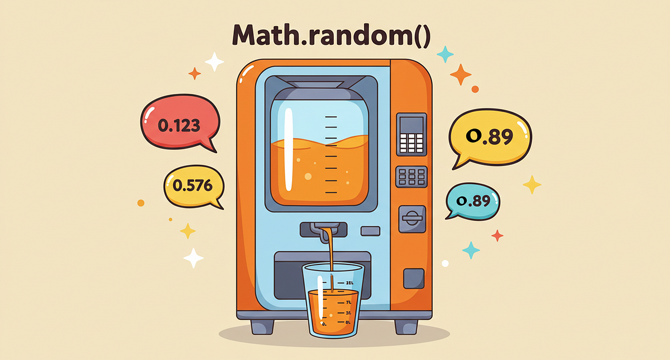Javascript
Dev
269

Image Credit: Dev
How to Avoid JavaScript for Infinite Scrolling Using HTMX
- Infinite scrolling is a popular UI pattern that allows users to scroll through a large set of data without clicking through pages.
- With HTMX, you can implement infinite scrolling without custom JavaScript by utilizing server-side rendering.
- The tutorial guides on setting up a Flask app, creating HTML templates, adding the infinite scroll trigger, and testing the implementation.
- HTMX offers a simple implementation without custom JavaScript, fast server-side rendering, and lightweight efficiency for web apps.
Read Full Article
16 Likes
Dev
182

Image Credit: Dev
Using HTMX with REST APIs: Building Modern Web Apps with Minimal JavaScript
- HTMX is a tool that allows developers to create interactive frontends without extensive custom JavaScript, making it suitable for server-driven applications with dynamic interfaces.
- The guide demonstrates using HTMX to consume a REST API and update the UI dynamically with minimal JavaScript involvement.
- Steps include setting up a Flask backend with a simple REST API, building a frontend in Flask to interact with the API using HTMX, creating HTML templates for UI rendering, and running both servers together.
- HTMX facilitates utilizing REST APIs without heavy JavaScript frameworks, leveraging Python skills and Jinja2 templates, and maintaining a lightweight and fast frontend, while also requiring slightly more server-side processing and an extra integration layer.
Read Full Article
10 Likes
Dev
45

Image Credit: Dev
🧠 JavaScript Framework Showdown: React vs. Vue vs. SolidJS in 2025
- In 2025, React, Vue, and SolidJS stand out in front-end development in the JavaScript ecosystem.
- SolidJS is the winner in performance due to its fine-grained reactivity and compiled output.
- React excels in developer support, Vue in simplicity, and Solid in logic clarity, tying in developer experience.
- SolidJS wins in reactivity model, React dominates in ecosystem & tooling, while Vue is best for developer onboarding and productivity.
Read Full Article
2 Likes
Medium
237

Image Credit: Medium
Memory Leaks in JavaScript and What Causes Them
- JavaScript quietly allocates memory for new values like variables, objects, arrays, or functions when created.
- Memory for small values is stored in variables, while larger structures are stored in heap memory.
- Memory is reclaimed when a value is no longer reachable by any part of the running program.
- JavaScript engines, like V8 and SpiderMonkey, use generational, incremental mark-and-sweep collectors.
- Closures and DOM interactions are common causes of memory leaks in JavaScript.
- Improperly cleared timers like setInterval and setTimeout can lead to memory leaks.
- Detached DOM trees and undisposed event listeners can also cause memory leaks.
- Proper memory management in JavaScript helps prevent slower performance, increased memory usage, and crashes.
- Understanding reference creation and cleanup is crucial to avoiding memory leaks in JavaScript applications.
- Regularly nullifying unnecessary references and cleaning up after closures and DOM manipulations can prevent memory leaks.
Read Full Article
14 Likes
Medium
132

Image Credit: Medium
Cut, Drop, or Round? Breaking Down JavaScript’s Math Methods
- JavaScript's math methods Math.trunc(), Math.floor(), and Math.ceil() explained with simple examples.
- Math.trunc() removes decimal points without rounding and works the same for negative numbers.
- Math.floor() rounds down to the nearest whole number, while Math.ceil() rounds up, even for negative numbers.
- Math.round() rounds to the nearest integer and in the case of negative numbers, it rounds up towards the more negative integer.
Read Full Article
7 Likes
Dev
136

Image Credit: Dev
Stop Letting JavaScript Numbers Fool You – Master Them in Minutes!
- JavaScript stores all numbers as floating-point values, including integers.
- Basic arithmetic operations like addition, subtraction, multiplication, and division work as expected in JavaScript.
- Be cautious of floating-point precision issues in JavaScript due to binary floating-point math.
- JavaScript includes special number values like Infinity, -Infinity, and NaN (Not a Number).
Read Full Article
8 Likes
Medium
8

Image Credit: Medium
Day 2 of 20: Think Like a Dev — Storing Data the Smart Way in JavaScript
- JavaScript provides different ways to store data using variables and understand various data types.
- It is recommended to use 'let' for variables that may change, 'const' for fixed values, and 'var' for legacy code with reassignment.
- When naming variables, it is advised to use camelCase and meaningful names for clarity and consistency.
- JavaScript tutorials offer clear concepts, hands-on challenges, practical tips, and ensure steady progress in learning.
Read Full Article
Like
Dev
310

Image Credit: Dev
Daily JavaScript Challenge #JS-168: Check for Balanced Brackets in a String
- Today's JavaScript challenge is about checking for balanced brackets in a string.
- The challenge involves writing a function to check if a given string has balanced parentheses, square brackets, and curly braces.
- The function should return true if the brackets are balanced, otherwise false.
- Developers can participate by forking the challenge, writing their solution, testing it, and sharing their approach in the comments.
Read Full Article
18 Likes
Medium
36

Image Credit: Medium
Functional Programming Tricks That Work Well in JavaScript
- Functional programming in JavaScript heavily relies on closures and memory management behind the scenes, especially in methods like map, filter, and reduce.
- Functions passed into map, filter, or reduce carry a 'memory' (closure) of the variables from the environment in which they were created.
- Map creates a new array by applying a function to each item, maintaining access to variables via closures.
- Filter tests and decides whether to keep items based on a function's result, benefitting from closure to hold onto external variables.
- Reduce accumulates a single result by passing an accumulator through each step with closure maintaining outside values.
- JavaScript's reference-based memory model for arrays and objects encourages immutability to avoid unexpected side effects.
- Immutability involves creating new objects based on the original, preventing shared memory changes and enhancing data predictability.
- Immutable patterns allow for safer data manipulation by controlling shared memory creation.
- Functional programming concepts naturally align with closures, references, and immutability in JavaScript for cleaner and more predictable code.
- By understanding these concepts, using map, filter, reduce, and immutable patterns becomes a natural and effective way of working in JavaScript.
Read Full Article
2 Likes
Dev
9

Image Credit: Dev
Daily JavaScript Challenge #JS-167: Calculate the Maximum Depth of Nested Parentheses in a String
- Daily JavaScript Challenge: Calculate the Maximum Depth of Nested Parentheses in a String
- Description: Write a JavaScript function to determine the maximum depth of nested parentheses in a given string, handling valid parentheses and mismatched cases.
- Topic: String Manipulation
- Join the discussion on approaches, edge cases, and learnings in the comments section.
Read Full Article
Like
Medium
219

Image Credit: Medium
What Actually Happens When You Use “new” in JavaScript
- The new keyword in JavaScript triggers a series of steps to create a new object, set up internal connections, and run the constructor function.
- JavaScript first creates an empty object when the new keyword is used, which is intended to become an instance of the function being called.
- After creating the object, JavaScript links it to the constructor function's prototype, enabling method and property sharing efficiently.
- By setting up this link, JavaScript avoids copying methods onto each object individually, ensuring a lightweight and efficient object model.
- When the constructor function runs, this inside the function points to the new object created by new, allowing properties to be attached to it.
- JavaScript checks the return value of the constructor - if an object is returned, it replaces the initially created object; otherwise, the original object is used.
- Automatic object creation and prototype linking by new simplify object creation, making constructors act as recipes for objects.
- Using prototypes for method sharing reduces memory usage by having all instances point to the same methods, improving memory efficiency.
- Constructors can return different objects, providing flexibility for special cases and enabling the creation of factory-like constructors.
- Each step in the new process in JavaScript ensures smooth object creation without manual setup, enhancing developer productivity and code clarity.
Read Full Article
13 Likes
Dev
196

Image Credit: Dev
SpiderJS 🕷 | Hoisting in JavaScript
- Hoisting in JavaScript moves variable and function declarations to the top of their scope before execution.
- In ES5, var variables are hoisted with undefined, and function declarations are fully hoisted.
- In ES6+, let and const are hoisted but enter a Temporal Dead Zone (TDZ), causing errors if accessed before declaration.
- Arrow functions are not hoisted and must be declared before use.
Read Full Article
11 Likes
Medium
292

Image Credit: Medium
Roll the Dice with JavaScript: A Super Simple Guide to Random Numbers
- Understanding Math.random() in JavaScript: A simple guide explaining the concept of generating random numbers in coding.
- Math.random() generates decimal numbers between 0 and just under 1, useful for creating randomness in programs.
- By multiplying the decimal from Math.random(), you can stretch the range of random numbers for various applications.
- Using Math.floor() helps in converting stretched decimals to whole numbers, essential for tasks like simulating dice rolls in games.
Read Full Article
17 Likes
Medium
347

Image Credit: Medium
Property Access and Enumeration in JavaScript Objects
- JavaScript objects have internal systems to manage properties and optimize property access.
- Objects with consistent sets of properties may have a 'hidden class' for faster property lookups.
- JavaScript engines adjust internal structures based on object property changes.
- Properties in JavaScript have hidden attributes like writable, enumerable, and configurable.
- Property attributes can be inspected with methods like Object.getOwnPropertyDescriptor().
- JavaScript properties can be accessed through the prototype chain, with the object's own property taking priority.
- Object's non-enumerable properties are skipped in for...in loops.
- Object.keys() method only lists an object's own enumerable properties, excluding inherited ones.
- Object.getOwnPropertyNames() and Object.getOwnPropertySymbols() provide ways to access all properties.
- Modern JavaScript engines follow a specific order when listing properties: integers, strings, then symbols.
Read Full Article
20 Likes
Medium
173

Image Credit: Medium
Day 2 of 30: The JavaScript Swap Trick That’ll Blow Your Mind
- Day 2 of the 30-day JavaScript challenge focuses on a swap trick to improve coding skills.
- The challenge involves a simple problem that often stumps beginners in JavaScript.
- By using a swap trick, developers are able to exchange values without requiring a third variable.
- Participation in these challenges helps beginners learn to think like a developer and improve their coding skills.
Read Full Article
10 Likes
For uninterrupted reading, download the app